Rising Film Evaporator Model
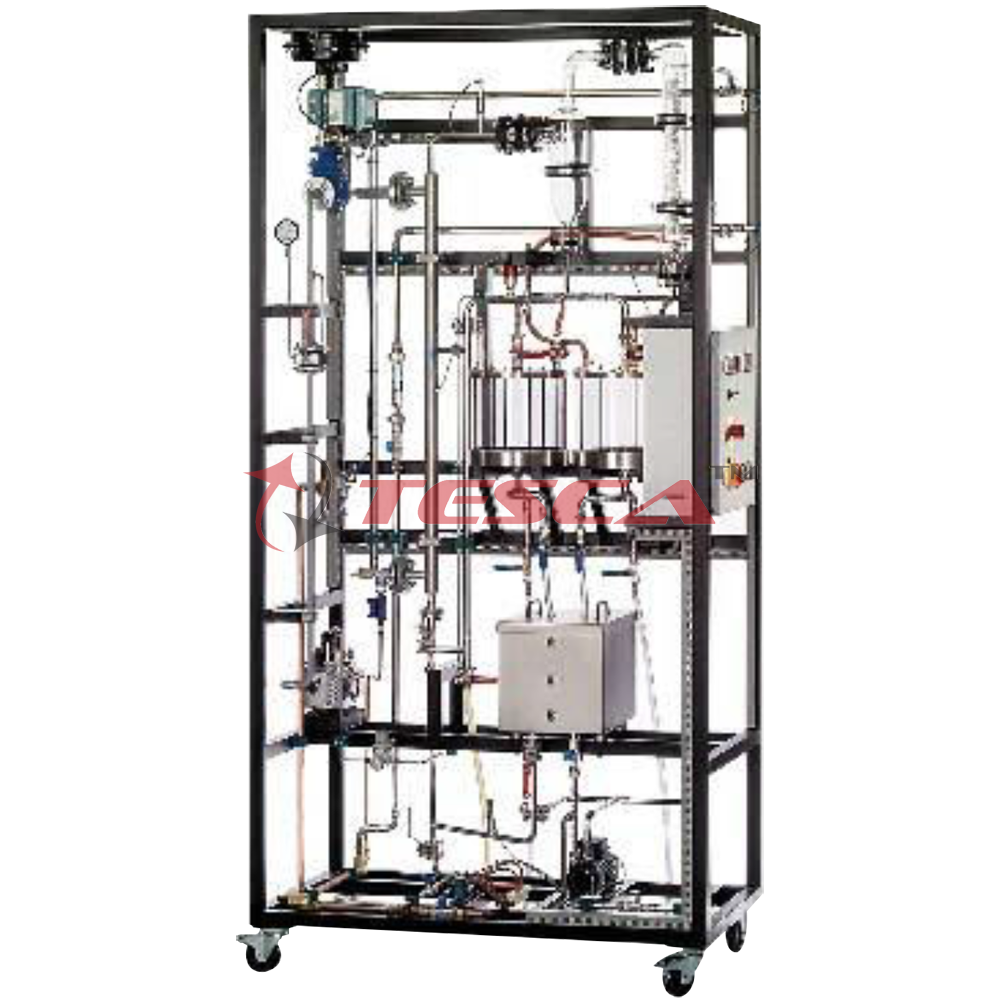
Order Code: 32385
Category: Thermodynamics Lab
Features Rising film evaporator for increasing the concentration of temperature-sensitive solutions Hygienic operation due to carefully selected materials such as stainless steel and glass Cleaning possible while installed Cou...
SPECIFICATION
Features
Rising film evaporator for increasing the concentration of temperature-sensitive solutions
Hygienic operation due to carefully selected materials such as stainless steel and glass
Cleaning possible while installed
Counter-flow process
Evaporators are used in process engineering and food technology for increasing the concentration of solutions. Part of the solvent is removed by evaporation, which means that the solution retains a higher concentration of dissolved solids. Film evaporators are used in particular for temperature sensitive solutions such as milk.
Rising Film Evaporator 32385 allows the operating behaviour of a rising film evaporator to be investigated. The untreated solution is fed from the feed tank below into the evaporator. The evaporator is a double pipe heat exchanger that is heated by steam. The steam pressure on the casing side is adjusted with a PID controller. A cyclone is installed after the evaporator to separate the evaporated solvent and the concentrated solution. The solvent vapour removed is condensed in a water-cooled condenser and collected in a tank. The concentrated solution can also be collected in a tank or fed back into the evaporator for the concentration to be increased further.
The two tanks, the cyclone and the condenser are made of glass for better observation. The system can also be operated under a vacuum to reduce the boiling point of the solvent. All relevant pressures, temperatures and flow rates are measured to allow evaluation and monitoring of the process.
To clean the system while installed, a pump and cleaning nozzles are fitted in the condensate and concentrate tanks.
Common salt and water are the recommended materials for experiments.
Specifications
Rising film evaporator for increasing the concentration of temperature-sensitive solutions
Stainless steel steam-heated single pipe evaporator
Control valve for adjustment of steam pressure via PID controller
Water jet pump and vacuum controller to reduce the evaporation temperature
Separation of concentrated solution and evaporated solvent using glass cyclone
Glass condenser for condensation of removed solvent vapour
Stainless steel feed tank
Glass tanks for concentrate and condensate
Measurement of flow rate, pressure and temperature
Steam supply from laboratory network
Technical Specifications
Rising film evaporator
Heat transfer surface: approx. 0,08m2
Length: approx. 1,2m
Control valve: Kvs value: 0,4m3/h
Water jet pump
Final vacuum: approx. 100mbar
Flow rate: approx. 90L/min
Vacuum controller: -100…0kPa
Condenser for solvent vapour
Heat transfer surface: approx. 0,2m2
Tanks
Feed: approx. 30L
Concentrate, condensate: approx. 10L each
Measuring ranges
Temperature: 7x 0…170°C
Pressure: -1…1bar; 0…6bar (abs); 0…10bar
- Flow rate: 2…36L/h; 0…1000L/h
Experiment Capabilities
Fundamental principle of film evaporation for increasing the concentration of temperature sensitive solutions
Investigation of the variables influencing the solid concentration in the solution
Influence of pressure and feed flow rate on the separating process
Influence of flow rate and pressure of the heating steam on the separating process
Investigation of the variables influencing the energy efficiency of the process
Energy balances at heat exchangers
System cleaning while installed
Services Required
Cooling water: 200…300L/h
Compressed air (control valve): 3…4bar, max. 300L/h
Heating steam: max. 2bar, 4…6kg/h

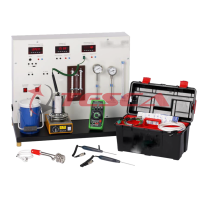

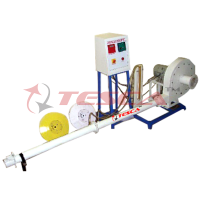
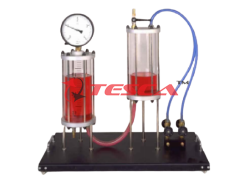

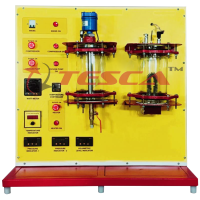

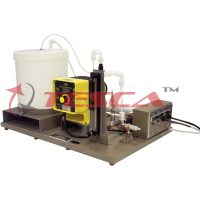

 91-9829132777
91-9829132777